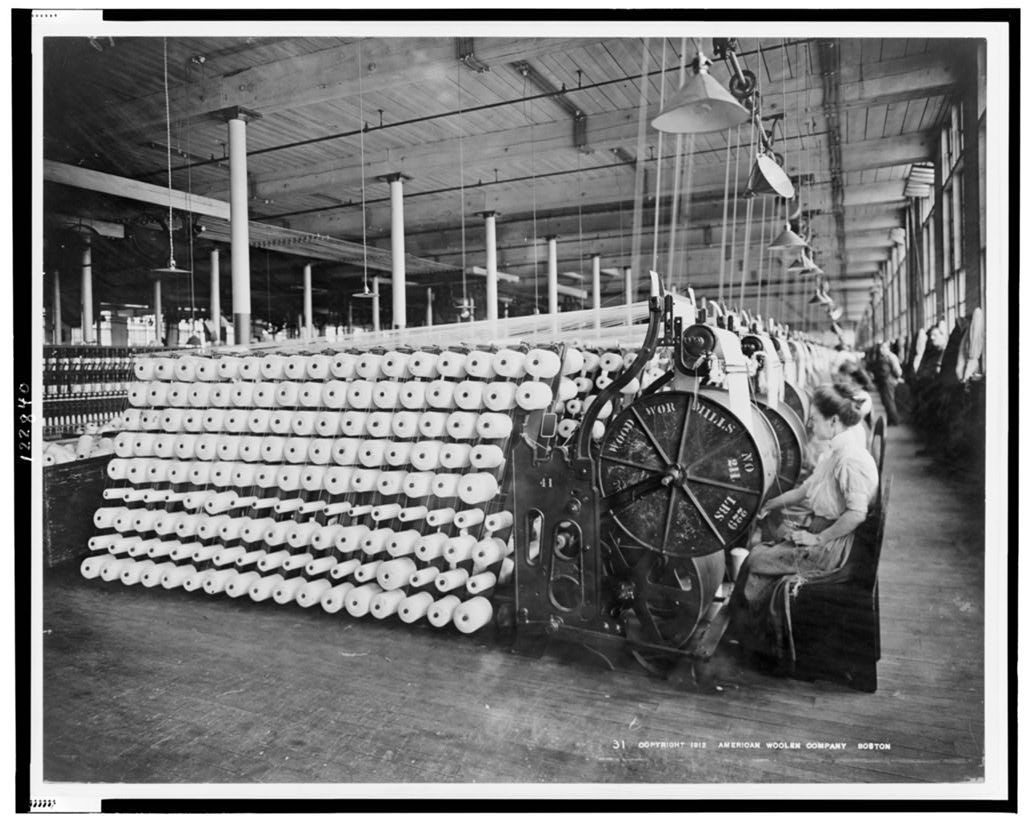
Women working at machines, beaming and inspecting yarn, American Woolen Company, Boston. Courtesy of the Library of Congress
Before the first World War women jobs were mostly restricted and limited to being a stay at home mom, cooking and cleaning to taking care of the kids or cooking and cleaning for other households. The World War had also left a shortage of men at home working. Instead women were required to do all of the men’s jobs which included wireless operators, assembly-line work, conductors (on buses and more), farm work etc. There was also a high demand of women to do heavy lifting like stocking furnaces, unloading coal and building ships. After the war, there was an increase in women working jobs as teachers, secretaries, typists, nurses, seamstresses etc. Department stores also hired women in big numbers, in these jobs they could work their way up to being buyers or designers.
Although there was not much of spike of women in the labor force between 1910 and 1920, there was a great spike between 1990 and 1910. Essentially, these women working these important jobs required practical clothes and shoes, corsets were no longer going to cut it.
More information women in the labor force at “What the Wage-Earning Woman Contributes to Family Support.”
